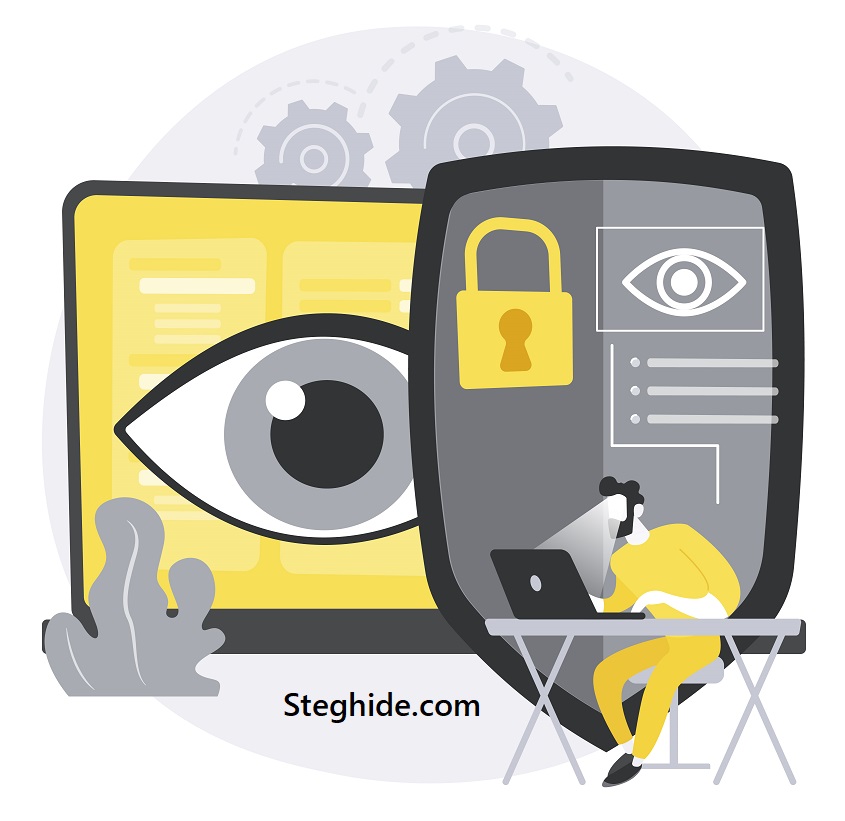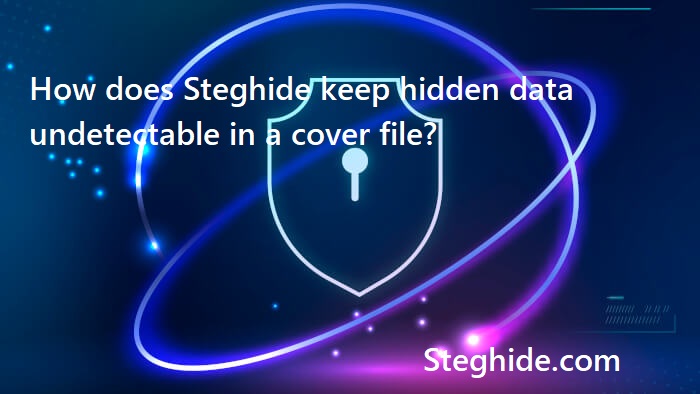Steghide is a powerful open-source steganography tool designed to hide sensitive data within various file formats, ensuring secure communication and data protection. By embedding information in seemingly innocuous files like images or audio, Steghide allows users to conceal messages without raising suspicion. Its versatility and ease of use make it a popular choice for cybersecurity enthusiasts, researchers, and anyone interested in protecting sensitive information through covert methods.
Understanding the file formats supported by Steghide is crucial for effective data embedding. The tool primarily works with specific image and audio formats, leveraging their structural properties to hide data without altering the file’s perceptible quality. This capability ensures that hidden messages remain undetectable to the untrained eye or ear, maintaining both security and integrity of the cover file.
This article explores the file formats compatible with Steghide, diving into their characteristics, limitations, and best practices for successful embedding. From popular image formats like JPEG to audio formats like WAV, we’ll cover everything you need to know to use Steghide effectively. Whether you’re a beginner or an experienced user, this guide provides actionable insights for secure steganography.
Overview of Steghide’s File Format Compatibility
What Makes a File Format Compatible with Steghide?
Steghide supports file formats that allow data embedding without compromising the file’s functionality or appearance. These formats must have enough redundant or non-critical data space to hide information effectively. Steghide uses algorithms to embed data in specific areas of a file, ensuring no noticeable changes occur. Image and audio files are ideal due to their complex structures, which provide ample space for hiding data.
Why File Format Matters in Steganography
The choice of file format impacts the success of steganography. Formats with lossy compression, like JPEG, may limit embedding capacity due to data loss during compression. In contrast, lossless formats like BMP or WAV offer more space for hiding data. Understanding these differences helps users select the right format for their needs, balancing security, file size, and embedding capacity for optimal results.
General Requirements for Steghide-Compatible Files
Steghide requires files to be in a format that supports its embedding algorithms, such as LSB (Least Significant Bit) steganography. The file must be unmodified and free from encryption or proprietary restrictions. Additionally, the file size should be sufficient to accommodate the hidden data. Steghide supports a limited but versatile set of formats, primarily focusing on widely used image and audio types.
Image Formats Supported by Steghide
JPEG: The Most Popular Choice
JPEG is one of the most widely used image formats supported by Steghide. Its lossy compression makes it compact, but this limits the amount of data that can be embedded. Steghide embeds data in the frequency domain of JPEG files, ensuring minimal visual distortion. Users must ensure the JPEG file is of sufficient quality to avoid artifacts that could reveal hidden data.
BMP: Ideal for Lossless Embedding
BMP (Bitmap) files are uncompressed, making them perfect for Steghide’s data embedding. Their large file sizes provide ample space for hiding significant amounts of data without quality loss. However, BMP files are less common in everyday use, which might draw suspicion in certain contexts. They are best suited for scenarios requiring high embedding capacity and no compression-related data loss.
Supported Image Formats and Their Limitations
Steghide supports the following image formats for embedding data:
- JPEG: Widely used, but limited by lossy compression, reducing embedding capacity.
- BMP: Offers high capacity due to no compression, but large file sizes may be impractical.
- PNG: Not officially supported, as Steghide’s algorithms are optimized for JPEG and BMP.
Users must consider file size and compression when choosing an image format. Testing the output file ensures the embedded data remains secure and undetectable.
Audio Formats Supported by Steghide
WAV: The Go-To Audio Format
WAV files are uncompressed, making them a primary choice for Steghide’s audio steganography. Their large size and lack of compression provide substantial space for embedding data. Steghide modifies the least significant bits of audio samples, ensuring no audible changes. WAV files are ideal for users needing to hide large amounts of data in audio without quality degradation.
AU: A Lesser-Known Option
AU (Sun Audio) is another audio format supported by Steghide. Though less common than WAV, AU files are also uncompressed, offering similar embedding capabilities. They are suitable for specific applications, particularly in legacy systems or environments where AU files are standard. Users should verify compatibility with their intended playback systems to avoid issues.
MP3 and Other Unsupported Audio Formats
Steghide does not support MP3 or other lossy audio formats due to their compression, which disrupts embedded data. Lossy formats like MP3 reduce file size by discarding data, making them unsuitable for reliable steganography. Users attempting to use MP3 files may encounter errors or data corruption, emphasizing the importance of sticking to WAV or AU for audio-based embedding.
Video and Other File Formats: Are They Supported?
Why Video Formats Are Not Supported
Steghide does not support video formats like MP4 or AVI for data embedding. Video files often use complex compression algorithms, making reliable data hiding challenging. The tool’s algorithms are optimized for static image and audio files, not dynamic video streams. Users interested in video steganography may need to explore alternative tools designed for video formats.
Exploring Non-Media File Formats
Steghide is limited to image and audio files, excluding non-media formats like PDF, DOC, or TXT. These formats lack the redundant data space needed for steganography. Attempting to embed data in unsupported formats will result in errors. For non-media data hiding, users might consider cryptographic methods or tools designed for text-based steganography.
Workarounds for Unsupported Formats
To use unsupported formats, users can embed data in a supported file (e.g., JPEG or WAV) and then attach or reference it within the unsupported format. For example:
- Embed data in a JPEG and include it in a PDF.
- Hide data in a WAV file and link it in a document.
- Use multiple supported files to distribute large datasets.
These workarounds require careful planning to maintain security and avoid detection.
Best Practices for Choosing a File Format in Steghide
Balancing File Size and Embedding Capacity
Choosing the right file format involves balancing file size and embedding capacity. Large, uncompressed formats like BMP and WAV offer more space but result in larger files that may attract attention. Smaller, compressed formats like JPEG are less conspicuous but limit data capacity. Users should assess their needs and select a format that aligns with their security and practicality requirements.
Ensuring File Integrity Post-Embedding
After embedding data, verify the file’s integrity to ensure it remains functional and undetectable. Test the file in its intended environment (e.g., image viewers or audio players) to confirm no artifacts or distortions are present. Steghide’s algorithms are designed to minimize changes, but checking the output file is crucial. Use the following steps to validate:
- Open the file in standard software to check for errors.
- Compare the file’s appearance or sound to the original.
- Extract the hidden data to confirm accuracy.
- Use file analysis tools to detect anomalies.
- Share the file in a test environment to ensure compatibility.
H3: Selecting Formats Based on Use Case
The choice of format depends on the use case. For sharing images online, JPEG is practical due to its commonality. For sensitive data requiring high capacity, BMP or WAV is preferable. Consider the file’s intended distribution method and audience to select a format that blends seamlessly into its context, minimizing suspicion.
Troubleshooting Common File Format Issues
Errors with Unsupported Formats
Attempting to use unsupported formats like PNG or MP3 often results in Steghide errors. The tool will display messages indicating format incompatibility. To resolve this, convert the file to a supported format (e.g., PNG to JPEG or MP3 to WAV) using conversion software. Always verify the converted file’s quality before embedding to ensure it meets Steghide’s requirements.
Data Loss in Lossy Formats
Lossy formats like JPEG can cause data loss if the file is recompressed after embedding. To avoid this, embed data in the final version of the file and avoid further edits. If modifications are necessary, use lossless formats like BMP or WAV to preserve the hidden data. Always test extraction to confirm data integrity.
File Size Limitations and Solutions
Steghide may fail to embed large datasets if the cover file is too small. To address this:
- Use larger files (e.g., high-resolution JPEGs or extended WAV files).
- Split data across multiple files for distribution.
- Compress the data before embedding to reduce its size.
- Choose uncompressed formats like BMP for maximum capacity.
- Test embedding with smaller datasets to find the file’s limit.
These strategies help overcome size constraints while maintaining security.
Conclusion
Steghide offers a robust solution for hiding data in image and audio files, supporting formats like JPEG, BMP, WAV, and AU. By understanding the strengths and limitations of each format, users can optimize their steganography efforts for security and efficiency. Whether embedding small messages in JPEGs or large datasets in WAV files, Steghide’s versatility makes it a valuable tool. This guide equips you with the knowledge to choose the right format and troubleshoot issues, ensuring successful data concealment.



